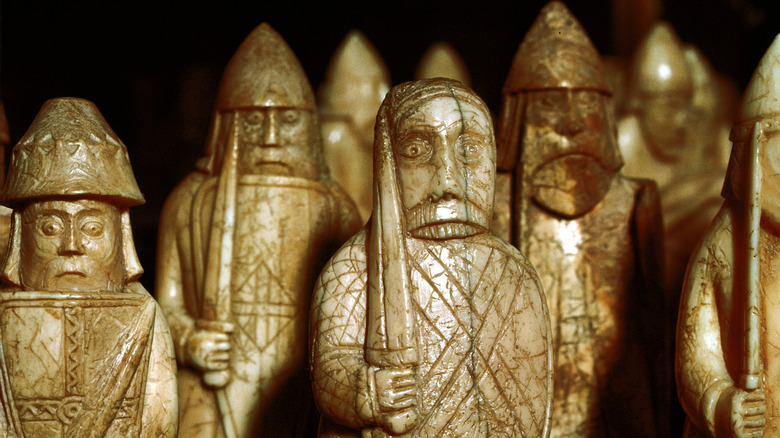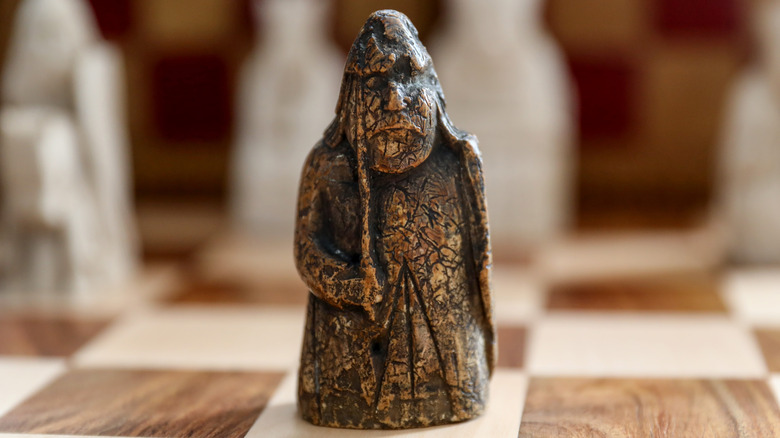The Unsolved Mystery Of The Lewis Chessmen
We've all seen a chess board. Most of us know the rules. So why does one specific chess set have so much mystery surrounding it, sparking questions that have yet to be satisfactorily answered? The Lewis Chessmen are exactly such a case, and have been ever since they washed up on Scottish shores in the 1800s (via Far & Wide).
The chess set was made in Norway over 1,000 years ago, and to this day remains the only complete medieval chess set to survive intact. The mystery of how these pieces ended up on the Isle of Lewis in such good condition endures to this day. A big theory is that the Isle of Lewis was then part of Norway, not Scotland, and a merchant would have buried the chess set for safekeeping before then traveling somewhere like Ireland to trade them. However, this is all mere speculation, and the question might never find its true answer.
Multiple sets for different games were found
According to National Museums of Scotland, the pieces are made of walrus ivory and sperm whale teeth, probably carved in Trondheim, Norway, around the turn of the 13th century. The total hoard had 93 total game pieces, including four different chess sets and pieces for other games, such as hnefatafl, a Nordic chess-like game where a king has to be escorted to one of the corners of the game board. Also included were pieces for a game very similar to backgammon.
At the time the pieces were buried, the Isle of Lewis was part of the Kingdom of Norway, and even after it was ceded to Scotland, its ties to Norway remained close. While the merchant theory is the most prevalent today, another idea suggests that the chess set belonged to a powerful local, such as a leader, prince, or bishop, who had no intention of selling. Even the manner of the discovery of these pieces is unclear, some writing they were found in the ruins of a monastery. Whatever the location and reason for their burial, the Lewis chessmen have served as creative inspiration for centuries. Many have likely seen them on the big screen without knowing it, as the living chess pieces in "Harry Potter and the Sorcerer's Stone" were modeled off of this famous set.

